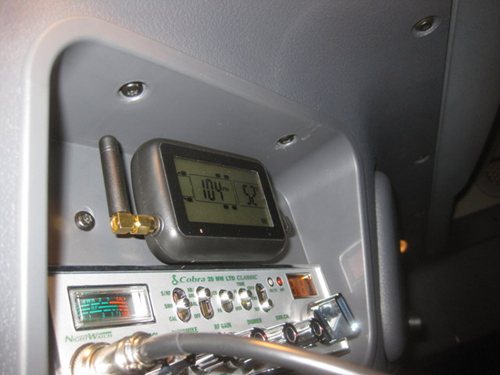
I just recently added a Tire Pressure Monitoring System (TPMS) to my Cascadia Evolution. The system I chose is by “Truck System Technologies.” The kit selected includes six wheel sensors for the tractor. I’m not using a tire monitor on my trailer at this time as it’s equipped with a central tire inflation system. Until a flow through sensor becomes available, it’s not possible to use the system with a central inflation system.
The addition of the TPMS fits well with the other safety options which were ordered on my Cascadia Evolution. Such as, On Guard collision mitigation, stability -roll over protection system and six channel ABS disc brakes.
I really like knowing that all my tires are properly inflated at “all times”, not just when I’m checking the tire with a gauge. The system also informs you of the temperature of the tire. This information may give you an early warning to an early wheel bearing failure or a dragging brake shoe.
This discussion lends me to reflect on an experience I had years ago. I just purchased eight brand new drive tires. I had a shipment going from North Carolina to Florida. Prior to leaving on the trip, I made sure to check the pressure on each tire to insure they were all equally inflated. All appeared well and I proceeded to my Orlando destination. I took my usual break in Georgia. Upon getting out of the truck and doing a walk around check, I noticed the tread on the inside left lead axle of the tandem was distorted. I tapped the tire and discovered it was almost completely flat. I began to look for a possible nail or puncture and couldn’t find anything. I used my air hose to refill the tire. No leak was to be found however, in looking at the tread, it was obvious that the tire had over heated. I then filled the tire and still couldn’t detect any type of leak. I decided to proceed down the road and stopped to purchase another matching tire. The technician looked over the tire with me and we couldn’t find any leak… not even the valve stem. While checking my tire pressure that morning, I suppose spraying each valve stem with soapy water would have been a good idea. However, we know how many people really take this step. We determined that a small piece of dirt or debris must have hung up in the valve stem. If back then, I had a simple tire monitor as discussed above, I would have known much earlier that the valve stem had a slow leak. Years ago, the tire cost me $350.00. Today we know that same tire costs much more.
This story upsets me even today, as I lost a tire by checking the pressure of a tire.
Here is a link to find out more about this system http://www.tsttruck.com/